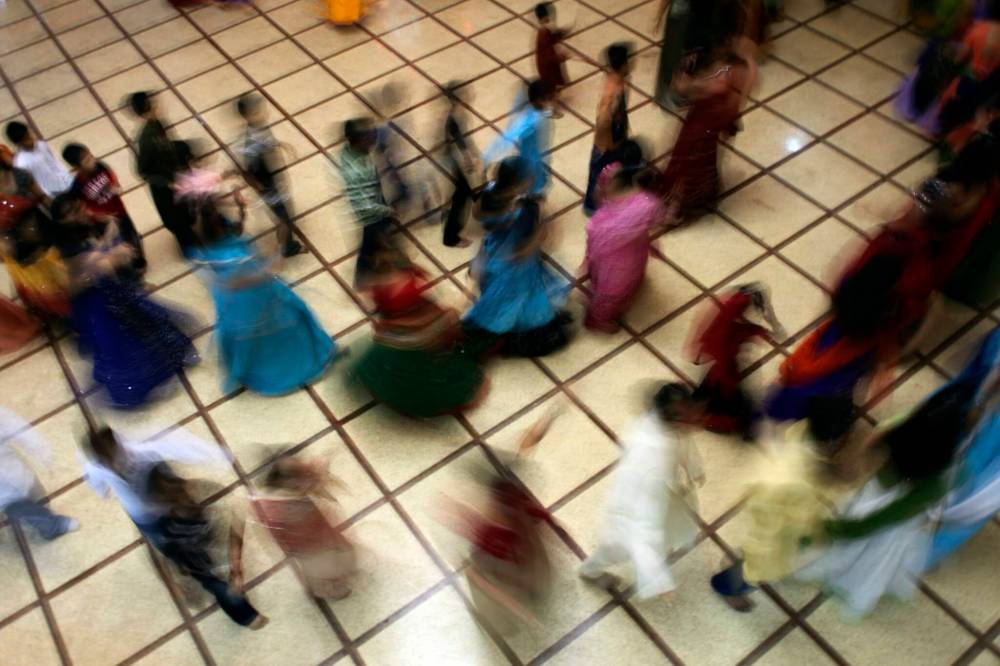
The Hindu spring festival, Chaitra Navratri, honours the goddess Durga as the universal Divine Mother, with her nine avatars worshipped respectively over nine nights of festivities. Read this article for free: Already have an account? To continue reading, please subscribe: * The Hindu spring festival, Chaitra Navratri, honours the goddess Durga as the universal Divine Mother, with her nine avatars worshipped respectively over nine nights of festivities. Read unlimited articles for free today: Already have an account? The Hindu spring festival, Chaitra Navratri, honours the goddess Durga as the universal Divine Mother, with her nine avatars worshipped respectively over nine nights of festivities.
The celebration is a time of retrospection and renewal for the Hindu diaspora around the world. The first day, March 30, marked the Hindu New Year and the festival continues until April 7, according to the Hindu lunar calendar. During this auspicious time, many Hindus partake in a fast, or vrat, for the entire celebration.

Considered a pledge or vow, the vrat is taken as a religious observance. Sayyid Azim / The Associated Press files March 30 marked the Hindu New Year and the festival continues until April 7, according to the Hindu lunar calendar. Fasting, in this sense, does not mean consuming no food at all, but rather consuming only specific foods.
The essence of Navratri is to embrace the positive energy of the Goddess Mother within you and around you. How we treat our bodies via what we consume helps us reach a path to positivity and peace. The significance of the fast is about detoxifying the mind and body; the food consumed follows a sattvic diet.
Hailing from the Sanskrit word “sattva,” the term means pure and balanced. The principle, rooted in Indian philosophy, is anchored to Ayurvedic health. Sattvic foods take a mindful approach to holistic well-being.
They are significantly plant-based nourishments, including vegetables, fruits, seeds and nuts. The Navratri fast is about eating fresh foods, eating light and eating healthy. Not consuming leftovers and reducing your quantity of food is central to this fasting.
Dishes are mild-tasting; one would not eat spicy foods and limit items that stimulate the tastebuds. By refraining from strong spices and reducing rich meals, devotees can concentrate better on Navratri prayers and rituals and deepen their spiritual connection. Foods that are not consumed during the Navratri fast are grains (wheat, rice), legumes and pulses, garlic, onions, meats, eggs, seafood and canned, processed and fast foods.
While caffeine in the form of coffee should be limited, herbal teas work well. Abstaining from alcohol and tobacco is expected. Here is a look at some of the items that are essential to staying energized and hydrated during the fasting period.
Freepik Roti made from buckwheat flour ● Since no refined grains are eaten, staple food items of Indian meals, such as rice and roti (Indian flatbread), are not a part of the dietary regimen. Alternatively, roti can be prepared with buckwheat, which hails from a seed and is gluten-free. It can be paired with vegetables to make a light meal.
Other gluten-free flours that can be used are water chestnut (singhara) flour and amaranth (rajgira) flour. ● Potatoes, pumpkin, sweet potatoes, bottle gourd and taro root can be consumed. They can be eaten with gluten-free rotis or as a stand-alone dish with Indian yogurt, dahi, as a complement.
They would be cooked with lighter spices, such as cumin seeds and coriander seeds. Other fasting-friendly spices are green cardamom, cloves and cinnamon. Regular salt is not used.
Instead, Himalayan or rock salt is added to foods. Heavier spices, including garam masala, mustard seeds, red chili powder and turmeric, are avoided. Veggies such as spinach, cucumbers and tomatoes fit into the Navratri fast.
● Chaat refers to a set of tasty snacks, all with a mix of savoury, sweet and tangy flavours. While chaat masala contains some pungent flavours, such as black salt, for the Navratri fast, you would avoid this masala spice. Instead, rock salt and cumin powder are used to elicit the flavour factor.
Fresh lemon juice and some sugar can be added. Fruits choices are endless, including apples, grapes, papaya, bananas, pears and a variety of berries to yield a nutritious and colourful snack. ● There are a host of dried fruits that work for the Navratri fast, including dates, figs, raisins, cranberries and apricots, as well as almonds, walnuts and cashews, among other nuts and seeds.
They serve as energy-boosting snacks that are full of nutrients and fibre. Larry Crowe / The Associated Press files Dried fruit is one of many delectable dishes enjoyed during Chaitra Navratri. ● Having some sweetened foods comforts the fasting experience.
Sabudana is a popular food during the Navratri fast. Alternatively, known as tapioca pearls or sago, it is a starch hailing from cassava roots or palm trees. Sago is readily available, pre-packaged, in Indian ethnic grocery stores.
The dessert is cooked with milk, sugar, green cardamom, saffron threads and nuts or raisins to create a creamy treat. Another take on fruit chaat is to transform the snack into a dessert by adding condensed milk and kesar mango pulp to chopped fruits and topping with whipped cream. To keep the fruits on the healthier side, you can simply mix with dahi.
● Herbal teas, water, milk, fruit juices and smoothies are all allowed. These foods are relevant beyond the Navratri fasting; they are healthy choices that everyone can incorporate into their diet. There’s a misconception that healthy foods do not taste good or are not creative.
The Navratri fasting sets you on a journey towards a positive impact on your mind, body and soul. 30-40 minutes 3-4 people Boil cubed potatoes in medium-sized pot until tender. Do not allow potatoes to become too soft.
Let potatoes cool down and drain water from the pot. In a deep skillet, add vegetable oil and place on medium to high heat. Once oil is hot, reduce heat to medium.
Add cumin seeds and allow them to pop. Add grated ginger and stir for a few minutes. Add chopped tomatoes and cook until it becomes a sauce-like consistency.
Add chopped green chilies. Once mixture starts to separate from the sides of the skillet, add potatoes. Cook all ingredients together for 5-6 minutes.
Once potatoes become slightly cooked down, add rock salt and chunks of green peppers. Stir together for a few more minutes. Garnish potatoes and green peppers with chopped cilantro.
Turn off heat. Let dish stand for a few minutes. Pair dish with gluten-free roti or enjoy as a stand-alone dish, complemented with Indian yogurt, or dahi.
Advertisement Advertisement The Free Press acknowledges the financial support it receives from , which makes our coverage of religion possible..















